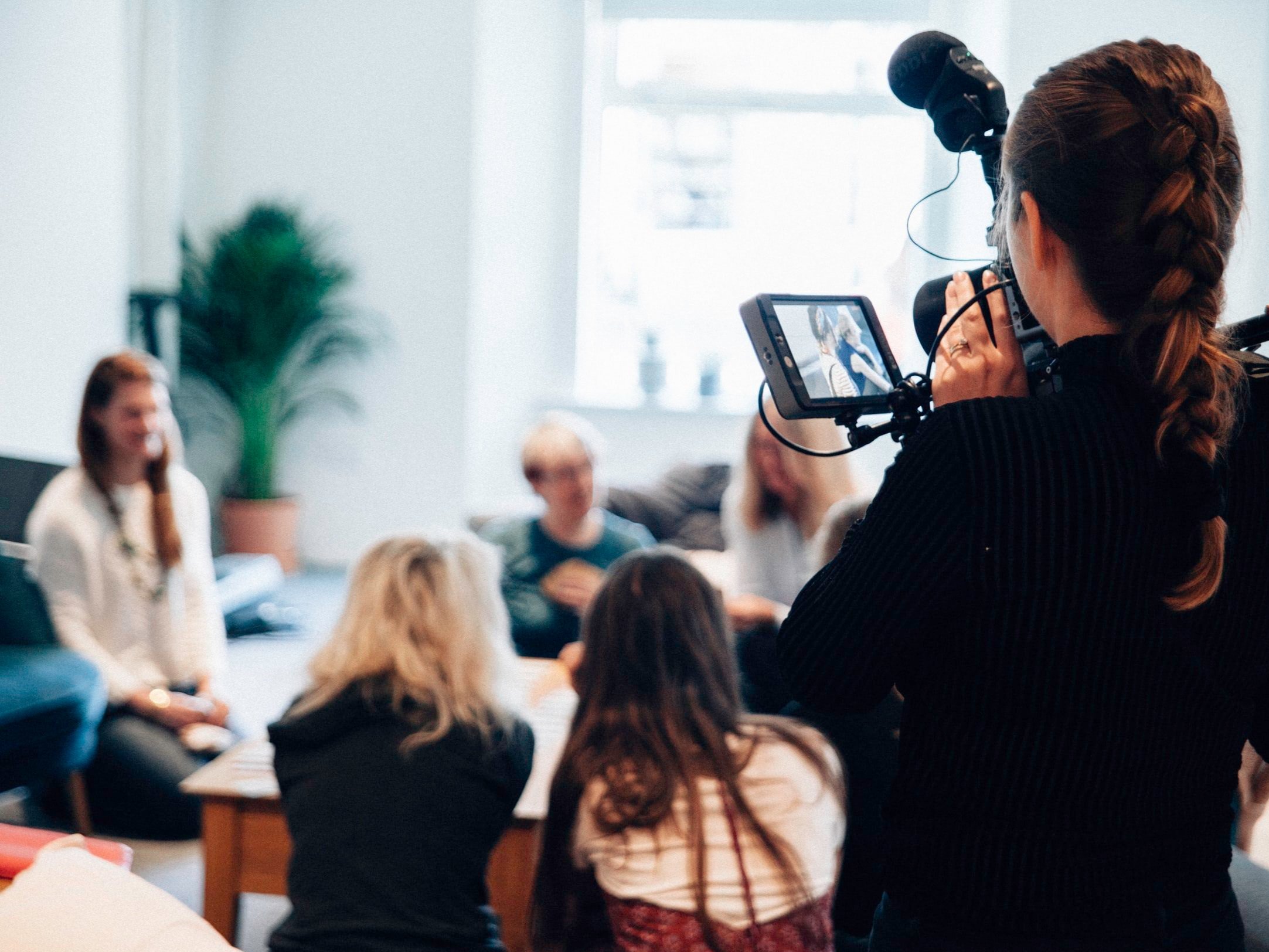HOW TO HOST A PANEL EVENT
Hosting a panel discussion is a powerful way to raise awareness about plastic pollution and move people to action to address this global crisis.
Although you may choose to host your panel in- person, you can also choose to host it virtually to enable speakers and participants from different areas to attend, limit barriers to participation, and keeps costs to a minimum. Whether you choose to host your panel discussion in-person or online, follow the steps below to help ensure a successful event.
1. Plan Ahead! Schedule your event as far in advance as possible (ideally, at least a month) to give yourself time to assemble a great panel and promote it to your community, your elected officials, and your local news media. If you’re planning to host your panel in-person, you’ll also need time to secure a good location.
2. Line Up Your A-List Speakers. Choose no more than two eloquent and inspiring speakers who bring something unique to the table and get them to commit (send lots of calendar invites and make sure they accept them). You can choose either all local speakers or a mix of a local and non-local panelist. Keep your list of speakers to no more than two + your moderator – any more than that leaves each speaker with too little time to make their points and answer questions.
3. Solicit Bios and Headshots. Ask your speakers to send you short bios and clear headshots to use in your event description and promotional materials. Follow up if you do not receive them in a timely manner.
4. Choose a Strong Moderator. You may choose a member of your group or another person involved in this work but, regardless, make sure that they are a strong public speaker who can be concise and that they are well-versed in the topics you’ll be discussing.
5. Collect RSVPs Online. Set up a way for people to RSVP online, whether it’s via Zoom, Facebook, Action Network or another tool. This gives you an easy way for you to follow up to remind people and is also a great email list building tool for your local group or affiliate. If you are hosting a virtual event, you may also want to allow people to submit questions for your panelists in advance to help get the discussion rolling and allow them to prepare. You can and should review the questions in advance and do some heavy curation to feed your speakers the most relevant and interesting questions.
6. Prep your Moderator. Provide the moderator with the short biographies of each speaker and confirm that they received them. If you’ve solicited questions from registrants in advance, share them with the moderator and review them together. Ask them to prepare their remarks and share them with you in advance.
7. Make A Virtual Flier Or Other Promotional Graphic. Use Canva (or another tool of your choice) to create a flier and a set of promotional graphics you can use to spread the word about your screening and panel online and offline. We recommend creating a full set of social media-ready graphics in the following dimensions - 1200 x 628 pixels (suitable for Twitter and Facebook) and 1080 x 1080 pixels (suitable for Facebook and Instagram).
8. Promote, Promote, Promote. Send a listing to your local events calendar and newspapers, invite your local elected officials, send a note asking people who run environmental and other relevant listservs or lead local groups asking them to share the invitation with their networks, and send a number of reminders to your own contacts. You can share the teaser for the film with everyone if it’s helpful.
9. Invite Your Local Elected Officials. Don’t forget to invite all your elected officials. They will likely send a staff person. If you have a very strong local ally who is an elected official, you can even invite them to be one of your speakers but keep in mind that then you will have to work really hard to get a large turnout as if only 5 or 10 people show up, it sends a bad message to the elected official that people don't care about the issue.
10. Create a Run of Show. Write out a clear schedule that leaves plenty of time for Q&A. Assign a moderator and someone to run the technology if you’re doing an online event. Ask your moderator and panelists to write their questions and key points out ahead of time. If your event is online, consider including at least one interactive element like a poll or survey. You can also ask people to submit questions when they register that your moderator and panelists can review in advance. Click here for a sample run of show you can use as a starting point.
11. Schedule a Practice Run. Find a time that works for all your panelists and your moderator and tech person to hop on Zoom (or if you’re hosting an in-person event, meet up in person) a few days before your event to run through everything and practice the flow of the event. If your panel event will be in person, visit the space to make sure the WiFi works, make sure there’s nothing confusing about getting in or out, and scope out the parking and public transportation options. Ask your speakers to share any slides they plan to present with you in advance to make it easier to troubleshoot any day-of tech issues (this also pushes them to prepare their slides in advance :))
12. Invite the Media. Issue a media advisory to let local reporters know about your event unless you plan to use it as a strategy planning session. Click here for a sample media advisory template you can customize.
13. Send Reminders! People are busy so send lots of reminders (including to your panelists). Ideally, you’d send out a reminder email a week before the event, another reminder the day before the event, and a final reminder the day of your event. If your event is in person, make sure to include clear directions and a link to the location in an online map tool like Googlemaps or YahooMaps.
14. Consider your Visuals. If you’re hosting your panel event in-person, you’ll want to bring some signs, banners or other “props” to provide some visuals and make the space look more interesting. You can either make signs yourselves or see if you can get a group of volunteers together for a sign-making party. If your group intends to host a lot of live events in person, it’s probably worth investing in a banner (though we’re afraid we don’t have any good recommendations for banners that are not made from plastic, sadly - please share anything you find with us.)
15. Record the Event. It’s helpful to record the event (and even livestream it if you’re doing it in person) so that people who couldn’t attend can still watch it after the fact. If you’re using Zoom, just remember to have whoever is running the webinar or meeting hit the Record button. If you’re hosting an in-person panel, you’ll need to assign someone to film it with a camera or smartphone (they can also livestream the recording via Facebook Live, Twitter or Instagram.) If you go the smartphone route and intend to livestream, make sure to visit the space in advance to ensure that there is a strong wifi connection and decide where you will position your camera person (ideally, near an outlet.) As a courtesy, let everyone at the meeting know that you’re going to be recording it.
16. Enable Live Transcription. If you’re hosting your panel via Zoom, it’s a good idea to turn on the built in captioning they provide free of charge - they call it Live Transcription. Although it gets many words wrong (good for a few giggles, at least), it will make your event much more accessible to anyone who is hearing impaired. If your audience includes many people for whom this would be helpful, you can also assign a very quick and accurate group member or volunteer to type the translation though it’s unlikely that they’ll be able to keep up unless you happen to have a court reporter in your midst. Click here for Zoom’s instructions for how to find this setting.
DON’T SKIP THESE CRITICAL STEPS AFTER YOUR PANEL EVENT WRAPS UP
17. Follow Up. Send an email to everyone who signed up/attended after the panel to thank them for attending and thank your panelists again, share the link to the recording (if you’ve done a virtual event or recorded your live event), and share more ways they can get involved in your work. Click here for a sample follow up email you can adapt.
18. Send Out a Survey to Solicit Feedback. It’s also a great idea to include a short survey in your follow up email to learn more about your audience’s reactions and interests and get their feedback on what went well and what could have been improved. Click here for a sample survey you can adapt.
19. Debrief with Your Team. Don’t forget to schedule a meeting with your team no more than two-three days after the event (the day after is ideal) with your team to discuss what worked, what didn’t, and review the survey responses from your participants so that you can tweak the process to make your next panel event even more successful. Make sure that someone takes notes during this meeting so that you don’t lose track of your lessons learned and can review them prior to planning your next event.









